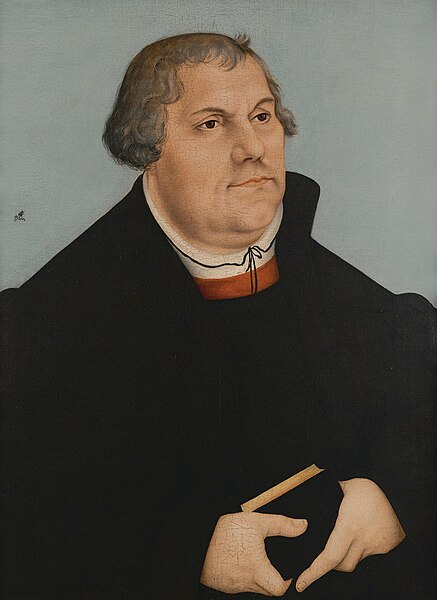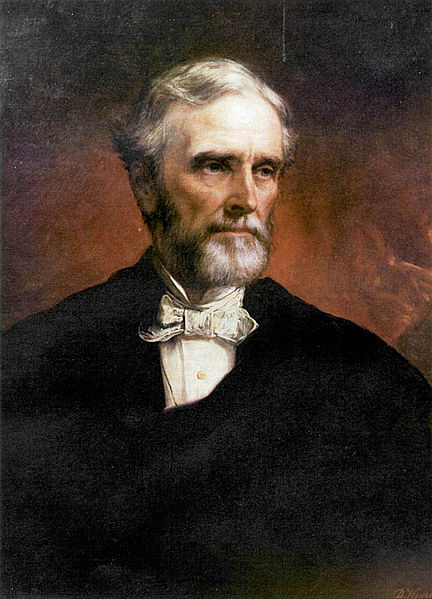This article delves into a curated selection of historical events that occurred on February 18th, presented in chronological order to provide a snapshot of the day’s significance across different eras and domains.
From early geopolitical shifts and groundbreaking explorations to pivotal moments in science, art, and social movements, February 18th has been a witness to events that have shaped the course of history.
Each entry highlights a specific event, offering insights into the circumstances of the time and the lasting impact these moments have had on the world. Through this exploration, we gain a deeper appreciation for the complexity of human history and the interconnectedness of past and present.
February 18th Events in History
1229 – The Sixth Crusade: Frederick II, Holy Roman Emperor, signs a ten-year truce with al-Kamil
Emperor Frederick II of the Holy Roman Empire embarked on the Sixth Crusade to the Holy Land without the support of the Pope, who had actually excommunicated him.
Through diplomatic negotiations rather than military conflict, Frederick managed to secure a significant peace treaty with Al-Kamil, the Sultan of Egypt, which returned Jerusalem, Nazareth, and Bethlehem to Christian control for a period of ten years.
Also Read: February 17 – On this Day in History
This event is notable as it represents one of the few instances in the Crusades where diplomacy, rather than military force, was used to gain control over the Holy Lands.
1478 – George, Duke of Clarence, convicted of treason against his older brother Edward IV of England, is privately executed in the Tower of London
George Plantagenet, Duke of Clarence, was a central figure in the Wars of the Roses, a series of civil wars for control of the throne of England. He was brother to King Edward IV and Richard III.
George’s shifting allegiances and eventual conviction of treason against Edward IV led to his private execution in the Tower of London. Legend has it that he was drowned in a barrel of Malmsey wine, though this is widely debated by historians.

1546 – Martin Luther, German professor of theology, composer, priest, monk, and a seminal figure in the Protestant Reformation, dies in Eisleben, Saxony, within the Holy Roman Empire
Martin Luther, a German monk, theologian, and professor, was a seminal figure in the Protestant Reformation.
His disputes with the Roman Catholic Church over issues such as the practice of indulgences, the nature of penance, and the authority of the pope led to his excommunication and the formation of new Christian denominations.
Also Read: February 19th Events in History
His translation of the Bible into the German vernacular made the text more accessible to the general public, significantly influencing the spread of Protestantism. Luther died on February 18, 1546, in Eisleben, Saxony, within the Holy Roman Empire.
1564 – The artist Michelangelo dies in Rome
Michelangelo Buonarroti, commonly known as Michelangelo, was an Italian sculptor, painter, architect, and poet of the High Renaissance. His works significantly influenced the development of Western art.
Michelangelo is renowned for his mastery across multiple art forms, with iconic works such as the statues of David and the Pietà, as well as the ceiling and Last Judgment fresco of the Sistine Chapel in Rome. He died in Rome on February 18, 1564, and is often remembered as one of the greatest artists of all time.
1685 – Fort St. Louis is established by a Frenchman at Matagorda Bay thus forming the basis for France’s claim to Texas
The establishment of Fort St. Louis by the French explorer René-Robert Cavelier, Sieur de La Salle, marked France’s claim to the region of Texas. La Salle’s expedition aimed to create a French foothold in the Mississippi Valley.
However, due to navigational errors, they landed in Texas, far from their intended destination. The establishment of the fort on Matagorda Bay was intended as a base for French exploration and as a deterrent against Spanish claims in the region.
Despite facing numerous hardships, including hostile natives, disease, and supply shortages, Fort St. Louis was a pivotal moment in the early European colonization of North America. It ultimately led to increased French presence in the area, although the fort itself was short-lived and faced eventual destruction.
1861 – In Montgomery, Alabama, Jefferson Davis is inaugurated as the provisional President of the Confederate States of America
On February 18, 1861, Jefferson Davis was inaugurated as the provisional President of the Confederate States of America in Montgomery, Alabama. This event was a direct consequence of the secession of several southern states from the Union, following the election of Abraham Lincoln as President of the United States.
Davis’ presidency and the formation of the Confederacy were central to the outbreak of the American Civil War, a conflict that would become the bloodiest in United States history and significantly shape the nation’s future, including the abolition of slavery and the redefinition of federal and state rights.

1885 – The Adventures of Huckleberry Finn by Mark Twain is published in the United States
Mark Twain’s “The Adventures of Huckleberry Finn” was published in the United States on February 18, 1885. The novel is noted for its vivid descriptions of people and places along the Mississippi River and is considered one of the greatest works of American literature.
Seen through the eyes of the young protagonist, Huck Finn, the story critically examines the social norms of the antebellum South, including racism, moral hypocrisy, and the complex social stratification.
Twain’s use of local dialects and his unflinching portrayal of the complexities of society and human nature make the novel a pivotal work in American literary history.
1911 – The first official flight with air mail takes place from Allahabad, British India, when Henri Pequet, a 23-year-old pilot, delivers 6,500 letters to Naini, about 10km away
On February 18, 1911, the first official air mail flight took place as part of an exhibition at the Allahabad Aviation Week in British India. French pilot Henri Pequet carried 6,500 letters a distance of about 10 kilometers from Allahabad to Naini, marking the world’s first air mail service.
This pioneering event demonstrated the potential of airplanes as a means of transporting mail, leading to the development of air mail services worldwide. It was a significant milestone in the history of aviation and postal service, showing the feasibility and efficiency of air transport for mail over traditional ground-based delivery methods.
1930 – While studying photographs taken in January, Clyde Tombaugh discovers Pluto
The discovery of Pluto on February 18, 1930, by American astronomer Clyde Tombaugh was a landmark event in the field of astronomy. Working at the Lowell Observatory in Flagstaff, Arizona, Tombaugh discovered the dwarf planet through the comparison of photographic plates, looking for moving objects against the backdrop of fixed stars.
Pluto’s discovery was the culmination of a search initiated by Percival Lowell, who theorized the existence of a ninth planet, referred to as “Planet X.”
Pluto’s status as the ninth planet in our solar system was a topic of much debate until 2006 when the International Astronomical Union reclassified it as a “dwarf planet” due to new definitions of what constitutes a planet.

1943 – The Nazis arrest the members of the White Rose movement
The White Rose was a non-violent resistance group in Nazi Germany, led by a group of students, including siblings Hans and Sophie Scholl, from the University of Munich. The group conducted an anonymous leaflet and graffiti campaign which called for active opposition against the Nazi regime.
On February 18, 1943, Hans and Sophie Scholl were observed by a university janitor while distributing leaflets and were arrested by the Gestapo.
The core members of the group were quickly tried, and key figures, including the Scholl siblings, were executed shortly thereafter. The White Rose movement is remembered for its moral courage and opposition to the tyranny of Nazi Germany.
1954 – The first Church of Scientology is established in Los Angeles, California
The first Church of Scientology was established in Los Angeles, California, on February 18, 1954. Scientology was developed by L. Ron Hubbard, a science fiction writer, in the early 1950s.
The church was founded as a religious organization based on Hubbard’s earlier self-help system, Dianetics, which proposed a method for improving mental and physical well-being.
Scientology teaches that human beings are immortal spiritual beings who have forgotten their true nature. The church has been the subject of controversy and legal battles over its practices, its treatment of members and critics, and its status as a religion.
1965 – Gambia becomes independent from the United Kingdom
The Gambia, a small West African country, gained its independence from the United Kingdom on February 18, 1965. This marked the end of British colonial rule, which had begun in the late 19th century.
The Gambia became a member of the Commonwealth of Nations immediately upon its independence. Dawda Jawara served as the first Prime Minister and later became the first President when The Gambia became a republic within the Commonwealth a few years later.
Gambia’s independence was part of a broader wave of decolonization movements across Africa in the mid-20th century.
1970 – The Chicago Seven are acquitted of conspiring to incite riots at the 1968 Democratic National Convention
The Chicago Seven were a group of anti-Vietnam War protesters charged with conspiracy to incite a riot and other charges related to protests and violent clashes with police during the 1968 Democratic National Convention in Chicago.
On February 18, 1970, five of the seven defendants were acquitted of conspiracy, but some were convicted on lesser charges related to crossing state lines to incite a riot.
The trial was famous for its cultural and political spectacle, reflecting deep divisions within the United States over the Vietnam War and the civil rights movement. The convictions were later reversed on appeal, and the Chicago Seven became symbols of the era’s tumultuous protest movements.
1977 – The Space Shuttle Enterprise test vehicle is carried on its maiden “flight” on top of a Boeing 747
On February 18, 1977, the Space Shuttle Enterprise undertook its maiden “flight” while attached to the top of a Boeing 747.
This event was part of the Space Shuttle program’s Approach and Landing Tests (ALT), which were conducted to validate the shuttle’s aerodynamics and handling characteristics in preparation for orbital flights.
Although the Enterprise never flew in space, these tests were crucial for the development of the Space Shuttle program, representing a significant milestone in the United States’ efforts to develop reusable spacecraft. The successful completion of these tests paved the way for the first orbital flight of the Space Shuttle Columbia in 1981.
1983 – Thirteen people die and one is seriously injured in the Wah Mee massacre in Seattle, Washington. It is said to be the largest robbery-motivated mass-murder in U.S. history
The Wah Mee massacre took place on February 18, 1983, in Seattle, Washington. It is considered one of the deadliest criminal incidents in the city’s history and the largest robbery-motivated mass-murder in U.S. history at the time.
The incident occurred in the Wah Mee gambling club, located in the heart of Seattle’s Chinatown-International District. Three gunmen entered the club, intending to rob it, and subsequently tied up, robbed, and shot 14 people, leaving only one survivor.
The tragedy shocked the community and led to a highly publicized investigation and trial, resulting in the conviction and life imprisonment of the perpetrators. This event has had a lasting impact on Seattle’s Asian American community and has prompted discussions on crime, safety, and social cohesion in diverse urban neighborhoods.
2001 – Inter-ethnic violence between Dayaks and Madurese breaks out in Sampit, Central Kalimantan, Indonesia
The Sampit conflict erupted on February 18, 2001, in the town of Sampit, Central Kalimantan, Indonesia. It was a violent clash between the indigenous Dayak people and the Madurese migrants from the island of Madura. Deep-rooted ethnic tensions, economic disparities, and social issues contributed to the outbreak of violence.
The conflict resulted in the deaths of hundreds of people, with reports of brutal killings and widespread destruction. Over 100,000 Madurese were displaced, fleeing to other parts of Indonesia to escape the violence.
The Sampit conflict remains one of the most severe instances of communal violence in Indonesia’s recent history, highlighting the challenges of managing ethnic relations and migration within the country.
2003 – Nearly 200 people die in the Daegu subway fire in South Korea
On February 18, 2003, a tragic fire occurred in the Daegu Metropolitan Subway in Daegu, South Korea. The blaze was started by an arsonist who set fire to a train stopped at the Jungangno Station of the Daegu subway system.
The fire quickly spread to a second train that had arrived at the station, resulting in the deaths of nearly 200 people and injuring many others. The incident exposed serious deficiencies in safety measures, emergency response, and the management of public transportation systems in South Korea.
It led to widespread public outrage, significant reforms in subway safety standards, and improvements in emergency response protocols across the country.
2007 – Samjhauta Express bombings occur around midnight in Diwana near the Indian city of Panipat, 80 kilometres north of New Delhi, killing 68 people
The Samjhauta Express, a train service connecting Delhi, India, and Lahore, Pakistan, was targeted in a series of bomb attacks around midnight on February 18, 2007, near the Indian city of Panipat, approximately 80 kilometers north of New Delhi.
The bombings killed 68 people and injured dozens more, with the majority of victims being Pakistani nationals. The Samjhauta Express was a symbol of peace and bilateral relations between India and Pakistan, and the attack strained the diplomatic ties between the two countries.
Investigations pointed to the involvement of extremist groups, highlighting the challenges of terrorism and its impact on international relations in South Asia.
2013 – Armed robbers steal a reported £32 million in diamonds from a Swiss-bound plane at Brussels Airport in one of the largest diamond heists in history
On February 18, 2013, a highly organized and armed group of robbers executed one of the largest diamond heists in history at Brussels Airport, Belgium. Disguised as police officers, the thieves breached security measures to reach a Swiss-bound plane loading diamonds from the Antwerp diamond district, estimated to be worth around $50 million.
Without firing a single shot, the robbers made off with the diamonds in a matter of minutes, showcasing the audacity and planning involved in the heist.
The incident not only shook the diamond industry but also raised serious concerns about the security of international transport and the audacity of criminal networks in executing such sophisticated operations.
